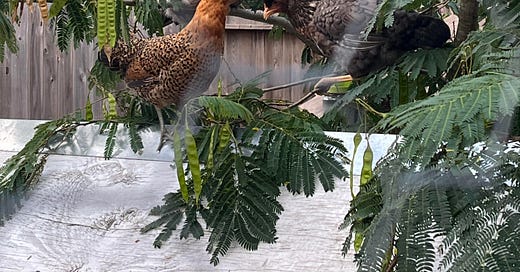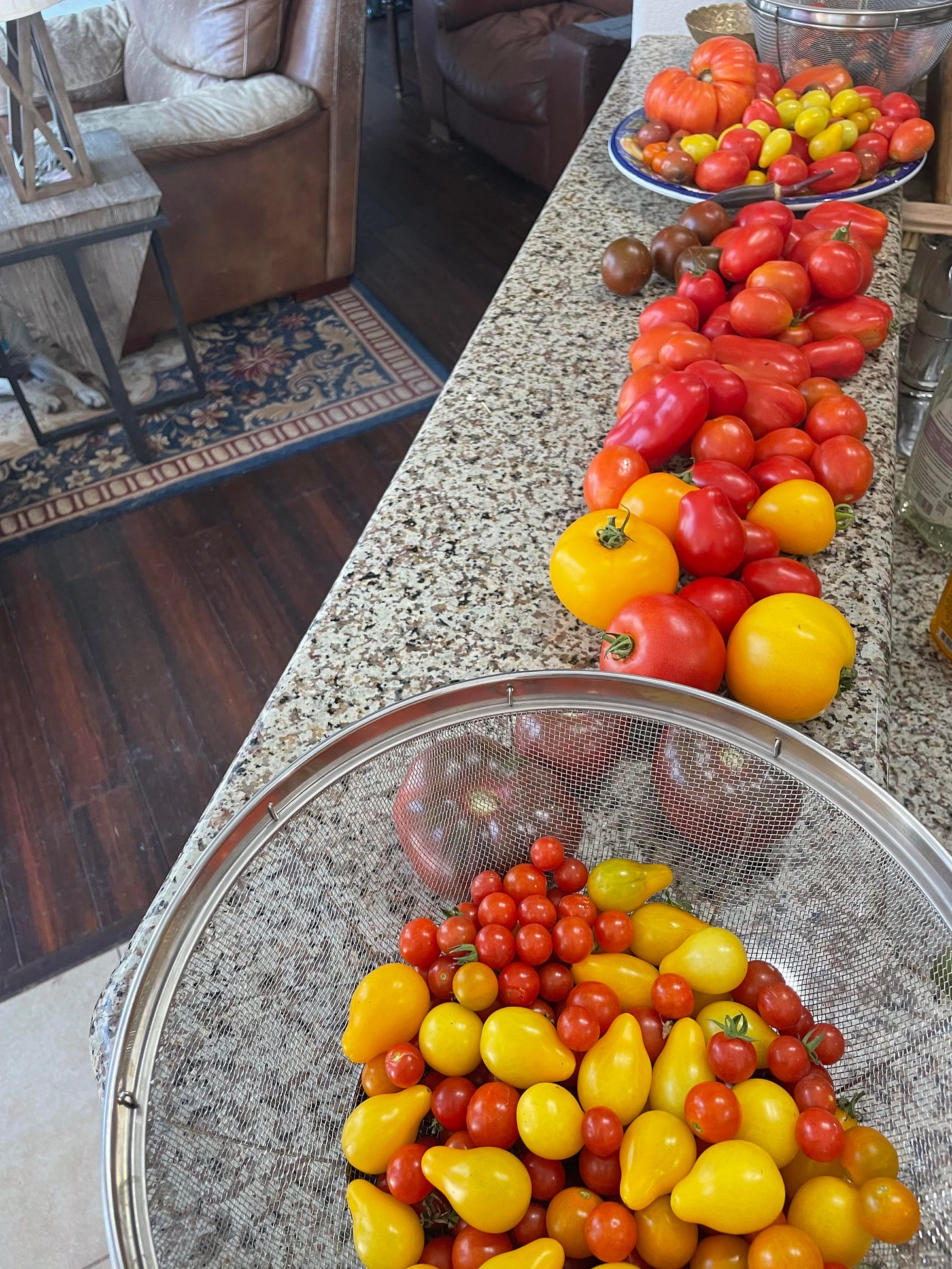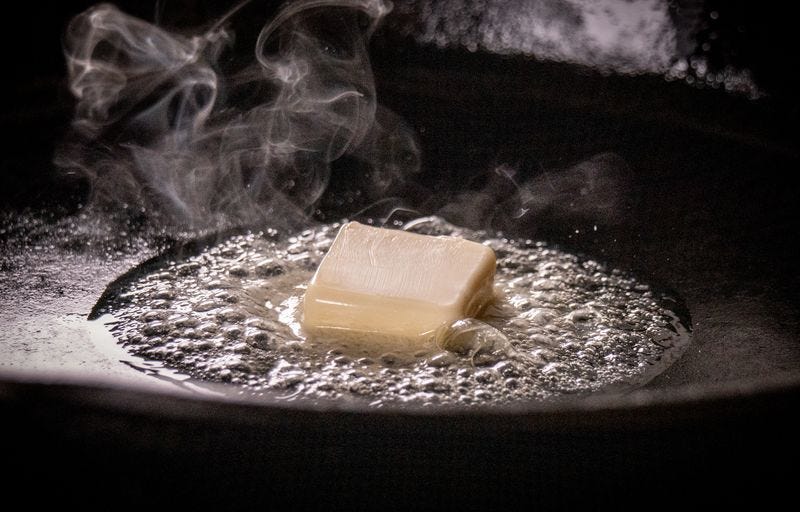GMO and Hybrid Plants -- NOT the Same
Plus, if you aren't willing to eat pollution butter, you're racist and hate the earth
A few weeks ago when I wrote Attack of the Purple Tomato, I discovered that there are quite a few people who don’t realize there’s a difference between GMO food crops and hybrids. People I talked to in person said things like, “We’ve been growing and eating genetically modified foods since the Middle Ages.” What these people (and even some here on Substack don’t realize) is that hybrids and genetically modified organisms (GMOs) are not the same.
I’m not a Medieval expert, so I can’t verify that people have been creating plant hybrids since then, but it could be true. Maybe people cultivated hybrids way back in the ancient Egyptian times or before. But, if so, they certainly weren’t genetically modifying plants in any way.
What Is a Hybrid Plant?
According to the Non GMO Project, people have been creating hybrid plants for thousands of years. In fact, hybridization occurs naturally in nature. It occurs when two plants of the same species create a new variety via cross-pollination.
Sometimes, people deliberately cross pollinate two varieties of the same plant in an effort to create a hardier version. This is completely natural and there’s no white coat necessary. Centuries ago, this process took several years, but we discovered a more efficient hybridization method in the 19th century, which only takes one generation to change the plant. These plants are still completely natural, but getting the traits you want (i.e. disease and pest resistant, climate tolerant, higher yields) happens much faster.
Sounds great! What’s the problem?
The problem comes in for those of us who save and store seeds from what we grow each season, so we can plant again the next year. Seeds from hybrid varieties don’t produce the same way in the next generation. This means you’d have to purchase hybrid plants each year because if you plant from a saved seed, the result will be nothing like the original hybrid.
This makes you dependent on seed companies, or dependent of the nursery where you can buy the starter plants each season. And that’s a problem. At Gluck Farms we do our best to avoid this type of dependence and you should too. That said, there’s nothing wrong with hybrids when it comes to health and safety.
Some people say that it’s important to keep different varieties of the same plant species far apart to avoid accidental (natural) cross-pollination, but we’ve never had an issue with that. I’m not sure why. Maybe it’s because we almost all heirloom varieties? But I don’t know why that would make a difference. Someone who knows more help me out!
Please, in your charity, consider buying me a coffee. Your donation doesn’t really go to coffee (you probably know that). It goes toward keeping the homestead up and running and supports my ability to produce wonderfully effective herbal salves, tinctures, and all-natural personal products like toothpaste and deodorant.
How are GMOs Materially Different from Hybrids?
With GMOs, the DNA has been deliberately manipulated in a laboratory. They’re genetically engineered in the true sense of that phrase. Scientists use biotechnology to force the combining of unrelated organisms in a petri dish (in vitro). The intention was, perhaps, innocent at first — create herbicide-tolerant plants, change the strength and height of wheat, increase heat and drought tolerance, etc.
Now researchers employ newer methods to produce plants that withstand the direct application of herbicides or plants that produce an insecticide themselves. These methods include CRISPR and some others that I don’t know much about.
CRISPR Gene Editing Is Not GMO?
Propaganda Alert! This posted sign serves as your warning…
North Carolina State University claims that CRISPR is a non-GMO method to edit plant genes. They say that they can use CRISPR to modify plant genes in a new, non-GMO way — a way that doesn’t lead to insertion of foreign DNA.
“This allows for precise genetic deletions or replacements, without inserting foreign DNA. Therefore, the end product is not a genetically modified organism, or GMO.”
This sounds like semantics — word trickery to me. If you’re removing and/or replacing a certain genetic sequence, that still genetically modifying the plant. Is it not?
The same article linked above states that the USDA and the FDA define GMO crops based on certain standards — theirs. Essentially, if a certain crop contains DNA sequences from other species, they’re considered GMO, but when someone has merely jacked with the genetic code and not added foreign DNA, it’s non-GMO. Further, these crops and their end products will not need to carry a GMO label under USDA rules.
What they’re saying, I suppose, is that this is simply a faster, more efficient way of creating a hybrid compared to the F1 hybridization method in use today. Obviously, seeds (if there are any) from these CRISPR modified products likely will not produce as expected when planted, making homesteaders and farmers dependent on buying new plants or seeds each year.
Grow Plants the Way Nature Made Them
The DS and I think of our growing efforts as co-creating with God. We’re not interested in putting all of our sweat, time, and effort into growing modified things modified in a lab.
Here’s a pic of one of our first heirloom cherry tomato harvests this season, with a few large ones mixed in.
Sometimes it’s more difficult because heirloom varieties have different needs than hybrids (and almost certainly GMOs). It takes some reading, talking to more experienced growers, and trial and error, but it’s definitely worth it.
Change the Climate by Switching to Pollution Butter!
I know it sounds like something from the Babylon Bee, but it isn’t. New Scientist magazine published an article titled, “‘Butter’ made from CO2 could pave the way for food without farming.”
Author Madeleine Cuff says a new start-up, Savor, is making butter from synthetic vegan fat — a substance which the company says is created without livestock, or the crops typically used to make margarine.
Cuff writes, “US start-up Savor has created a ‘butter’ product made from carbon, in a thermochemical system closer to fossil fuel processing than food production.” Savor spokeswoman, Kathleen Alexander proudly exclaims that their process doesn’t involve biology at all.
I might get spanked for sharing this, but here’s a picture from the Savor website featuring their synthetic vegan butter. Gross!
Savor’s process creates the synthetic vegan fat (WTH?) from “emissions captured from fossil fuel burnings and gas-powered vehicles. Pollution! The company breathlessly claims this will help in efforts to “save rainforests” and stop climate change, calling them “zero carbon fats,” and “carbon neutral fats.”
An article on the Interesting Engineering website reveals that Bill Gates heavily funds the project, hoping Savor will eventually use their method to create products to replace milk, cheese, and ice cream.
After all, the “alt-right” apparently uses milk to promote white supremacy. It seems like Savor might be on the bleeding edge of a new way to bludgeon those who resist the purposely engineered chaos plaguing the west at present.
News from the Homestead
Not much to report as we’re still cleaning up from the destruction (none of it affecting our home, all glory to God) the hurricane caused on our property. We should have most of it cleaned up and the final parts of the fence repaired this weekend. Then we’ll just need to repair the raised bed infrastructure, clean up plant debris, and a few other things. After that, it’s go-time again for the Hot Pants Farming Club!







Congratulations to your son! My brother just commissioned into the Marine Corps with an aviation contract, so he’ll be starting flight school soon, as well.
I live in western Oregon, but grew up partly in the Southeast US and partly in Germany. I have no idea if there’s a solid reason behind it, but in my opinion a tomato grown with full sun exposure has a sweeter, more intense flavor than any I’ve tried from a more controlled, hoop house environments in places with shorter growing seasons. The same goes for melons; I’ve yet to find a cantaloupe as good as the ones we had in the South.
I watched a Monty Don gardening episode in which he visits a center focused on developing aquaponics as a more efficient food growing system, and he touched on the same issue. Even with all the correct fertilizers and light exposure supposedly identical to sunlight, the tomatoes were sad and flavorless.
Cruciferous vegetables, root vegetables, and berries absolutely love it here, though. We’ve grown the most incredible cabbages with very little pest or disease issues!
Great article! This is such an important distinction to make. I’m also jealous of those gorgeous tomatoes; tomatoes grown in a hoop house just don’t taste the same, but that’s the only option for getting them to ripen where I live.